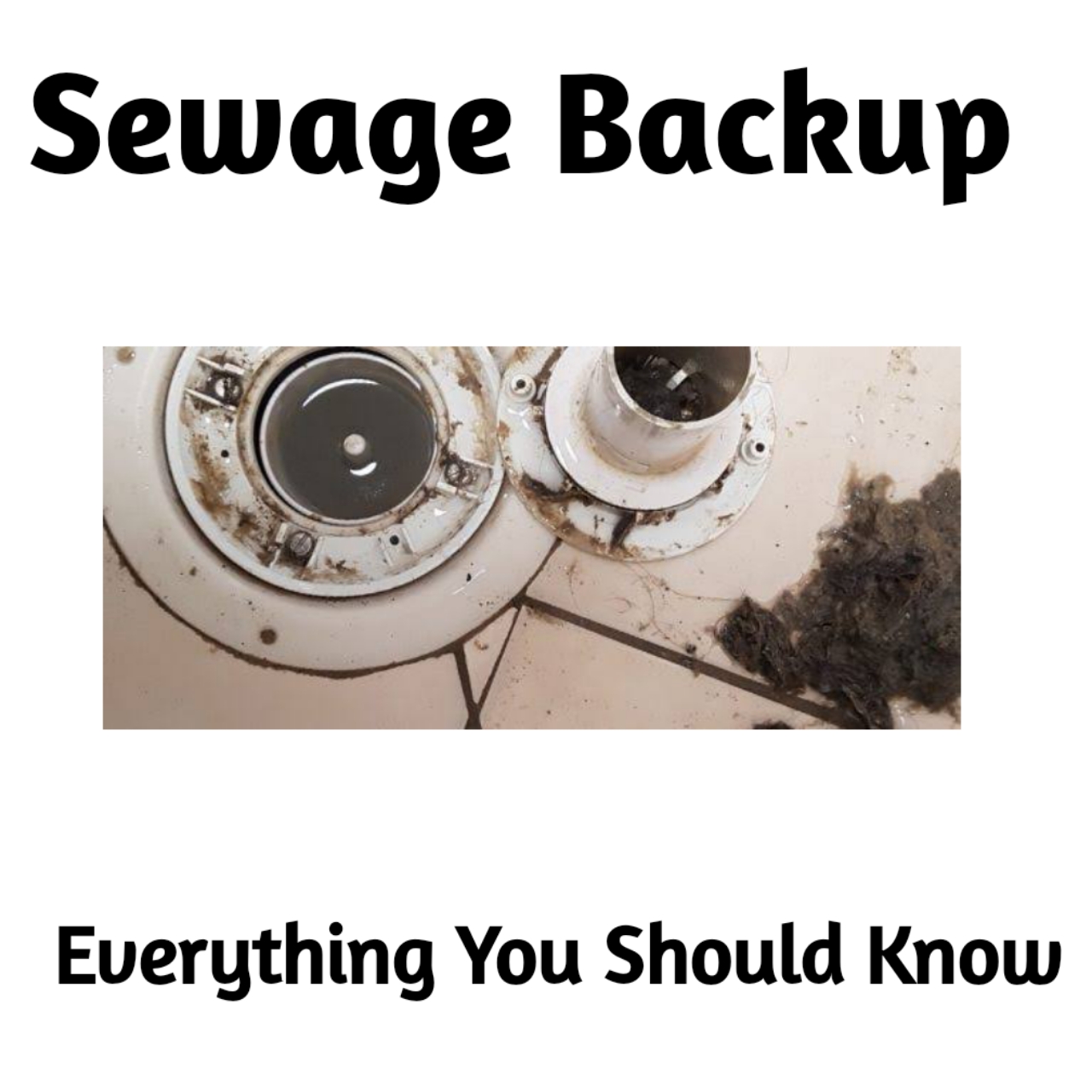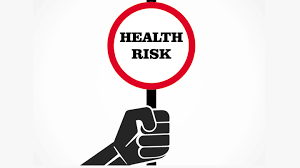What does sewer backs up mean?
While floods are probably best known for causing extensive water damage to homes and businesses, they can also cause sewage from sanitary sewer lines to back up into houses through drain pipes. If your sewer backs up into the basement or elsewhere, it needs to be cleaned up immediately. A blockage in the main sewer line could lead to water backing up into your tub or your basement. Sewer pipes can become clogged due to an excess of fats and oils, food waste, coffee grounds, hair, toilet paper, soap residue, or other materials flushed down the drain.
According to the National Resources Defense Council, there are more than two million reports of illnesses caused by sewage every year. Sewage backups are among one of the worst plumbing problems because of the risk that they present to homeowners and residents. Sewage can spread illness, disease, and even death. Sewage is full of viruses, bacteria, and other contaminants that can spread disease, and even death to your family and your pets. Wastewater is also full of other toxic substances like fungi, protozoan, pesticides, and residuals from medications. Sewer backup risks and side effects include:
Risk Of Infectious Disease
Raw sewage can make you sick because it is packed with infectious agents that can be lethal especially for children and the elderly. The following microorganisms are commonly found in sewage:
Acanthamoeba – Sewer backup can contain Acanthamoeba a microscopic, free-living ameba, or amoeba* (single-celled living organism), that can cause severe infections of the throat, nose, eye, skin, and central nervous system. The ameba is found worldwide in the environment in water and soil. It causes throat, nose, and eye infections. These infections can be difficult to treat and the people affected typically have weakened immune systems, early diagnosis offers the best chance at cure. Most cases of brain and spinal cord infection with Acanthamoeba (Granulomatous Amebic Encephalitis) are fatal.
E. Coli – E. coli refers to a wide range of bacteria that can cause various diseases, including pneumonia, urinary tract infections, diarrhea, abdominal cramps, and potentially death. People infected with this bacteria from Sewer backup, especially children under 5 and the elderly, can become very sick from E. coli O157:H7. The infection damages their red blood cells and their kidneys. This only happens to about 1 out of 50 people, but it is very serious. Without hospital care, they can die.
Heliobacter Pylori – Sewer backup is a rich source of Heliobacter Pylori previously known as Campylobacter pylori, a Gram-negative, microaerophilic bacterium usually found in the stomach. These germs can enter your body and live in your digestive tract. After many years, they can cause sores, called ulcers, in the lining of your stomach or the upper part of your small intestine. For some people, an infection can lead to stomach cancer.
Leptospirosis – Sewer backup can cause Leptospirosis a bacterial disease that affects humans and animals. It is caused by bacteria of the genus Leptospira. In humans, it can cause a wide range of symptoms, some of which may be mistaken for other diseases. Some infected persons, however, may have no symptoms at all. Leptospirosis is spread mainly by contact with contaminated water or a soil-like sewer backup.
Salmonella – Sewer backup will always contain Salmonella species that cause salmonellosis a common bacterial disease that affects the intestinal tract. Salmonella bacteria typically live in animal and human intestines and are shed through feces. Humans can become infected through contaminated sewage from backups. In severe cases, the Salmonella infection may spread from the intestines to the bloodstream, and then to other body sites, and can cause death, unless the person is treated promptly with antibiotics. In otherwise healthy adults, the symptoms can be mild.
Hepatitis – Hepatitis is a major risk for anyone who comes in contact with sewer backup. Hepatitis results in the inflammation of the liver. Inflammation is a tissue’s reaction to irritation or injury. It generally results in pain, redness, and swelling. Viral hepatitis is caused by a virus and exposure to sewage increases the risk of infection. In a cross-sectional study, the employees of a sewage company were tested for hepatitis B virus (HBV) markers, the results showed that exposure to sewage was independently associated with positivity for HBV infection. Hepatitis B is a potentially life-threatening liver infection. It can cause chronic infection and puts people at high risk of death from cirrhosis and liver cancer.
Encephalitis –The risk of Encephalitis from breathing raw sewage is very high with sewer backup. Encephalitis is an acute inflammation (swelling) of the brain usually resulting from either a viral infection or due to the body’s own immune system mistakenly attacking brain tissue. People with severe encephalitis are much more likely to die if they develop severe swelling in the brain, intractable seizures, or low blood platelet counts, regardless of the cause of their illness, according to new research.
Death from Toxic Gas
The combination of the two toxic gases hydrogen sulfide and carbon monoxide and the suffocating gas methane is called sewer gas can be deadly. The risk of inhaling the following gases is high with sewer back up:
Hydrogen sulfide: Exposure to low concentrations of hydrogen sulfide from sewer backup may cause irritation to the eyes, nose, or throat. It may also cause difficulty in breathing for some asthmatics. In addition, studies have shown that hydrogen sulfide has a depressant effect on the central nervous system in concentrations above 150 ppm.
Carbon monoxide: Breathing carbon monoxide from sewer backup can cause headaches, dizziness, vomiting, and nausea. If carbon monoxide levels are high enough, you may become unconscious or die. Exposure to moderate and high levels of carbon monoxide over long periods of time has also been linked with an increased risk of heart disease.
Risk of Electrocution
The greatest danger after a sewage backup or flood in your basement is electrocution and/or explosion from gas. From electrical fires to electric shock and even death, the dangers associated with live electricity during and following a flood or sewage backup should be taken seriously. While any disaster can cause electrical safety hazards, the mixture of water and electricity is very serious.
Frequently Asked Questions About Sewer Backups
Can Sewer Backups make you sick?
If you come into contact with infectious viruses, bacteria, fungi or other contaminants, you will very likely get sick and possibly end up in the emergency room. If there is a sewage backup in your home, call a qualified plumber as soon as possible. But perhaps more important to prevent sewer backup risks, call a licensed and professional remediation and clean-up company. Simply mopping up a contaminated sewer spill is not enough.
What happens when Sewer backs up?
When you flush the toilet, water backs up into or comes up in the tub or shower. When your sewer line is clogged, the water can’t go down the drain. Instead, it flows back up the pipes and comes out at the lowest point usually the shower drain. When you run water in the bathroom sink, the toilet bubbles, and gurgles.
Why does my plumbing back up when it rains?
Rainwater is either draining back into the sewer pipe and causing the overflow, or the pipe is sufficiently damaged that waste cannot pass through, instead of draining into the soil, which becomes waterlogged during heavy rainfall. The wastewater then backs up and flows into the lowest drains in your home.
How do you get rid of sewer backup in bathtub?
How to Clean Up From a Sewer Backup:
- Contact utility companies to turn services such as gas and electric off.
- Remove any water from the sewage backup using a wet/dry vacuum.
- Spray down the area with fresh water from a garden hose if sludge from the sewer backup remains on the walls.
- Clean floors with a mop, bucket, and disinfectant cleaning solution.
How do I stop raw sewage backup?
There are a few preventative measures homeowners can take for sewer backup prevention.
- Maintain your sewer lateral.
- Dispose of grease properly.
- Dispose of paper products properly.
- Consider plastic piping.
- Correct illegal plumbing connections.
- Consider a backwater prevention valve.
How do you get rid of sewer backup smell?
How to Get the Smell of Raw Sewage Out of the House
- Open all the windows in the house to get the smell of raw sewage out.
- Fill a plastic spray bottle with undiluted white vinegar, and use it to neutralize raw sewage odors in your home.
- Sprinkle baking soda onto your carpeting to get the raw sewage smell out, let it sit overnight, and then vacuum thoroughly.
Is breathing in sewage harmful?
It’s not healthy to breathe sewer gas. In fact, sewer gas can be dangerous. The foul smell is hydrogen sulfide, a gas that comes from decaying organic matter, aka sewage. In a residential home, it exists in low levels and can occur if a plumbing problem exists.
Why do my drains smell like sewage?
Fortunately, one of the most common causes of sewer odors in drains is also the easiest to fix. If you don’t run any water down a particular drain for a very long time, that water can evaporate to the point where sewer smells can make their way through
Is the landlord responsible for sewer backup?
Sewer backups can happen from a clog inside the dwelling and/or they can also back up from the city sewer lines. Either way, it’s not your responsibility. It’s the landlords. The only way you might be held responsible for any sewage backup is if you agreed to pay for backups in your lease.
What does sewer backup Coverage cover?
Sewer backup insurance will cover the cost of repairing or replacing this pipe. The insurance also covers professional cleaning or replacement of furniture or carpeting damaged by the backup.
What insurance covers sewer backup?
“Sewer backup coverage is available from most insurers usually at a cost of $40 to $160 on an annual insurance policy, depending on the amount of coverage and the deductible you select.” Flood damage is not covered, either under a sewer backup policy or a standard homeowner, renters, or business policy.
Should you get sewer backup insurance?
Most homeowners’ policies do not cover sewer backup unless specific sewer backup insurance coverage is added. If your home falls victim to the damages of backups or overflows and you aren’t covered, you’ll be liable for home repairs and cleaning costs out of your pocket.
What are the basic hygiene practices for workers handling sewage?
- Wash hands with soap and water immediately after handling human waste or sewage.
- Avoid touching face, mouth, eyes, nose, or open sores and cuts while handling human waste or sewage.
- After handling human waste or sewage, wash your hands with soap and water before eating or drinking.
- After handling human waste or sewage, wash your hands with soap and water before and after using the toilet.
- Before eating, remove soiled work clothes and eat in designated areas away from human waste and sewage-handling activities.
- Do not smoke or chew tobacco or gum while handling human waste or sewage.
- Keep open sores, cuts, and wounds covered with clean, dry bandages.
- Gently flush eyes with safe water if human waste or sewage contacts eyes.
- Use waterproof gloves to prevent cuts and contact with human waste or sewage.
- Wear rubber boots at the worksite and during transport of human waste or sewage.
- Remove rubber boots and work clothes before leaving the work site.
- Clean contaminated work clothing daily with 0.05% chlorine solution (1 part household bleach to 100 parts water).






